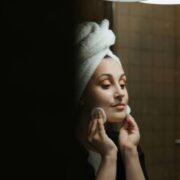Understanding the Ingredients in Your Beauty Products: What’s Safe and What’s Not
In recent years, there has been growing concern about the harmful chemicals found in everyday beauty products. From parabens to phthalates, many common ingredients can have negative effects on our health, including hormone disruption, skin irritation, and even long-term illnesses. As consumers become more conscious of what they put on their skin and hair, it’s essential to understand what ingredients to avoid and how to choose safer, more natural alternatives.
In this article, we will guide you through the risks associated with certain chemicals, how to read labels effectively, and what steps you can take to make informed choices about your beauty routine.
Why You Should Care About Ingredients
Your skin is the largest organ in your body, and what you put on it can significantly impact your health. Beauty products, including skincare, haircare, and cosmetics, are often absorbed by the skin and can enter the bloodstream. Over time, repeated exposure to harmful chemicals can accumulate in the body, leading to various health issues.
For example, certain ingredients used in hair relaxers and other styling products have been linked to serious health problems. Some hair styling products may cause cancer, and ongoing lawsuits against products like hair relaxers highlight the potential risks consumers face when they use products containing toxic substances.
Common Harmful Ingredients to Watch For
Many popular beauty products contain chemicals that may harm your health, even if they are widely used in the industry. Below are some of the most common harmful ingredients to watch out for.
Parabens
Parabens are preservatives in many beauty products to extend their shelf life by preventing mold and bacteria growth. However, parabens are known to disrupt hormone function by mimicking estrogen in the body, which may increase the risk of breast cancer.
Sulfates
Sulfates, such as sodium lauryl sulfate (SLS) and sodium laureth sulfate (SLES), are commonly found in shampoos, cleansers, and body washes. They are responsible for creating that rich, foamy lather, but they can also strip the skin and hair of natural oils, leading to dryness, irritation, and even allergic reactions. Long-term use of sulfates can damage the skin’s protective barrier.
Phthalates
Phthalates make nail polish, hairspray, and perfumes more flexible and long-lasting. However, they have been linked to endocrine disruption, reproductive issues, and developmental problems in children. Because phthalates can interfere with hormone levels, they are particularly harmful during pregnancy and early childhood.
Synthetic fragrances
Synthetic fragrances are often labeled as simply “fragrance” or “parfum” on product labels, making it difficult to know what chemicals they contain. Many synthetic fragrances are made from a mix of chemicals, some of which can cause skin irritation, allergies, and even hormone disruption. It’s always best to opt for products that use natural fragrances, such as essential oils.
How to read product labels effectively
Reading product labels can be daunting, as many beauty products contain long lists of ingredients with confusing chemical names. However, understanding how to read labels is crucial for making informed choices about what you put on your skin and hair.
Recognizing harmful ingredients
Start by familiarizing yourself with the most common harmful ingredients, such as parabens, sulfates, and phthalates. Once you know what to look for, you can quickly identify which products to avoid. Many brands also highlight if their products are paraben-free, sulfate-free, or phthalate-free, which can make shopping easier.
Do your research
If you come across an ingredient you don’t recognize, take a moment to research it. There are many online databases, such as the Environmental Working Group (EWG), that provide information about the safety of cosmetic ingredients. This can help determine whether an unfamiliar chemical is safe or potentially harmful.
The Role of Regulation in Beauty Product Safety
One of the challenges consumers face is the lack of stringent regulation in the beauty industry. In many countries, including the United States, beauty products are less regulated than food or drugs. Harmful ingredients can sometimes be included in products without adequate safety testing.
Limited regulation in the beauty industry
While some countries have banned certain chemicals from cosmetics, others have more lenient regulations. For example, Europe has banned more than 1,300 chemicals from cosmetics, while the U.S. has only banned about 30. This discrepancy highlights the need for consumers to proactively protect themselves by researching and choosing safer products.
Taking control of your beauty routine
Transitioning to a safer beauty routine doesn’t have to be overwhelming. By making small, gradual changes, you can control what you put on your body and reduce your exposure to harmful chemicals.
Start with the essentials
Begin by switching out the products you use most often, such as your daily moisturizer or shampoo. Look for brands that emphasize clean ingredients and avoid known harmful chemicals. Over time, you can replace other products as needed.
Resources for finding safe products
Many resources are available to help you find safe and effective beauty products. Websites like EWG’s Skin Deep provide ratings on the safety of thousands of products, allowing you to make more informed choices. Many beauty retailers now also have dedicated sections for clean beauty, making it easier to find non-toxic options.
Conclusion
Understanding the ingredients in your beauty products is essential for maintaining long-term health and safety. Many beauty products contain harmful chemicals like parabens, sulfates, and phthalates, which can cause skin irritation, hormone imbalances, or more severe health issues.
By learning to read labels and opting for safer, natural alternatives, you can reduce your exposure to toxic substances and make informed choices about the products you use daily. Remember, making small changes to your beauty routine can improve health and well-being in the long run.
If you want morе еxciting contеnt visit. Globallyviz.com














Comments